Marseille mClassic review: the graphics upgrade your Nintendo Switch needs
T3's Marseille mClassic review is here

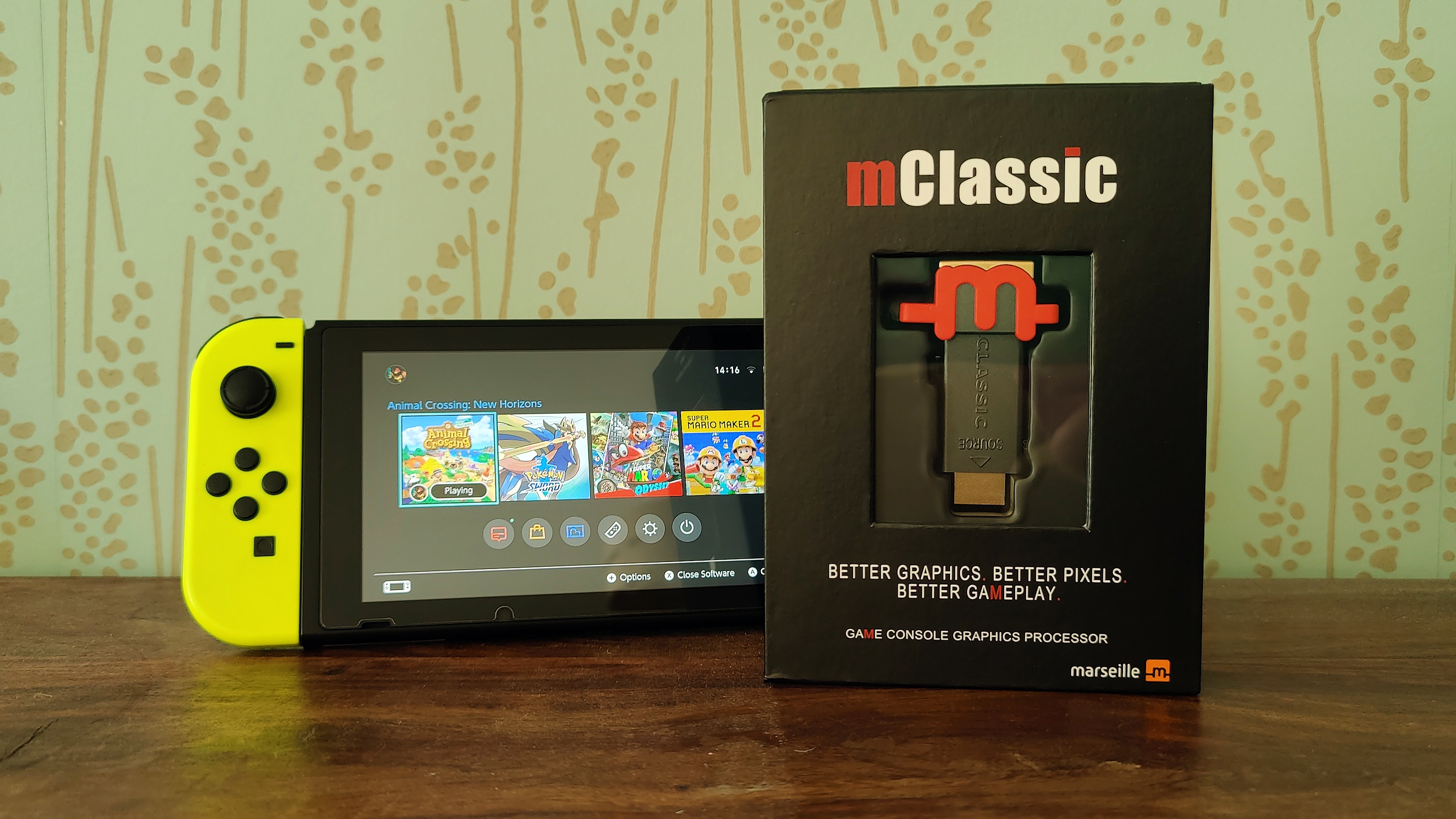
The Marseille mClassic is a plug-and-play graphics post-processor that, immediately and with zero effort or hassle, upgrades the graphics on a Nintendo Switch (as well as many other consoles, modern and retro). Delivering anti-aliasing, 4K up-scaling as well as a bevy of post-processing effects like image sharpening and depth of field enhancement, it is the graphics card upgrade Nintendo Switch gamers have been waiting for.
-
+
Plug-and-play
-
+
1ms latency
-
+
Excellent image enhancement
-
+
Affordable
-
+
Dedicated retro games mode
-
+
Stylish, compact design
-
-
None of note
Why you can trust T3

Marseille mClassic review: chip tech
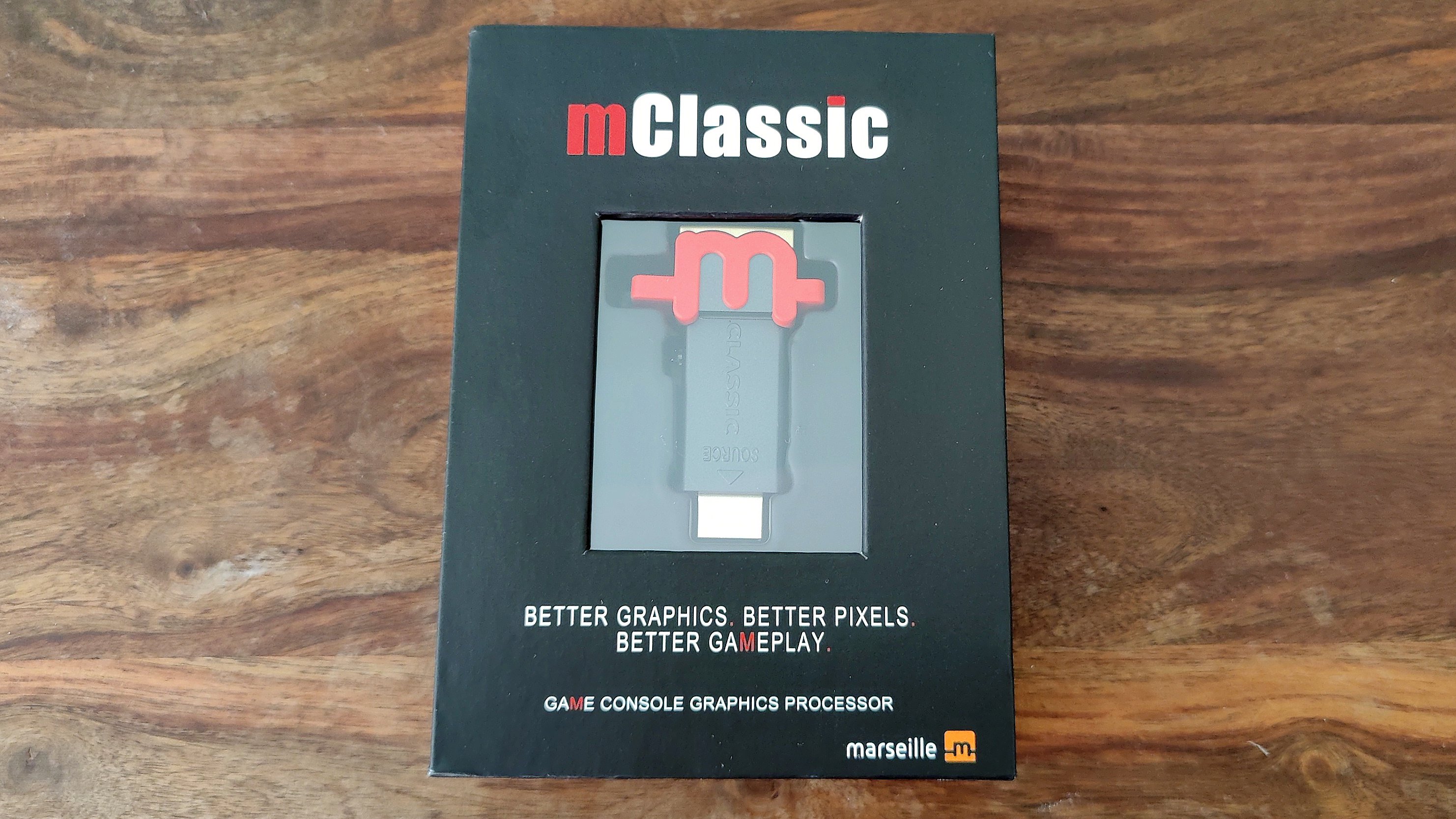
HDMI 1.4b Receiver
HDMI 1.4b Transmitter
HDCP 1.4 encryption/decryption engines
4K Chroma 4:4:4 Scaler Processor
120 FPS Graphic Post-Processor
Embedded Processor
Welcome to T3's Marseille mClassic review. Over the past week I have been testing out the Marseille mClassic to see just what this graphics post-processor upgrade is capable of on Nintendo Switch and what follows is my considered take.
In short, the mClassic is a plug-and-play graphics post-processor that sits between your console and its HDMI cable, taking the images fed out of the console and then ramping up their quality with a variety of post-processing effects such as anti-aliasing.
In layman's terms, that means images look clearer and sharper, as well as moving smoother, too. The console (in this test case, a Nintendo Switch) doesn't have to be modded or altered, either. You simply plug the mClassic in and it works.
Marseille mClassic review: what's in the box, price and release date
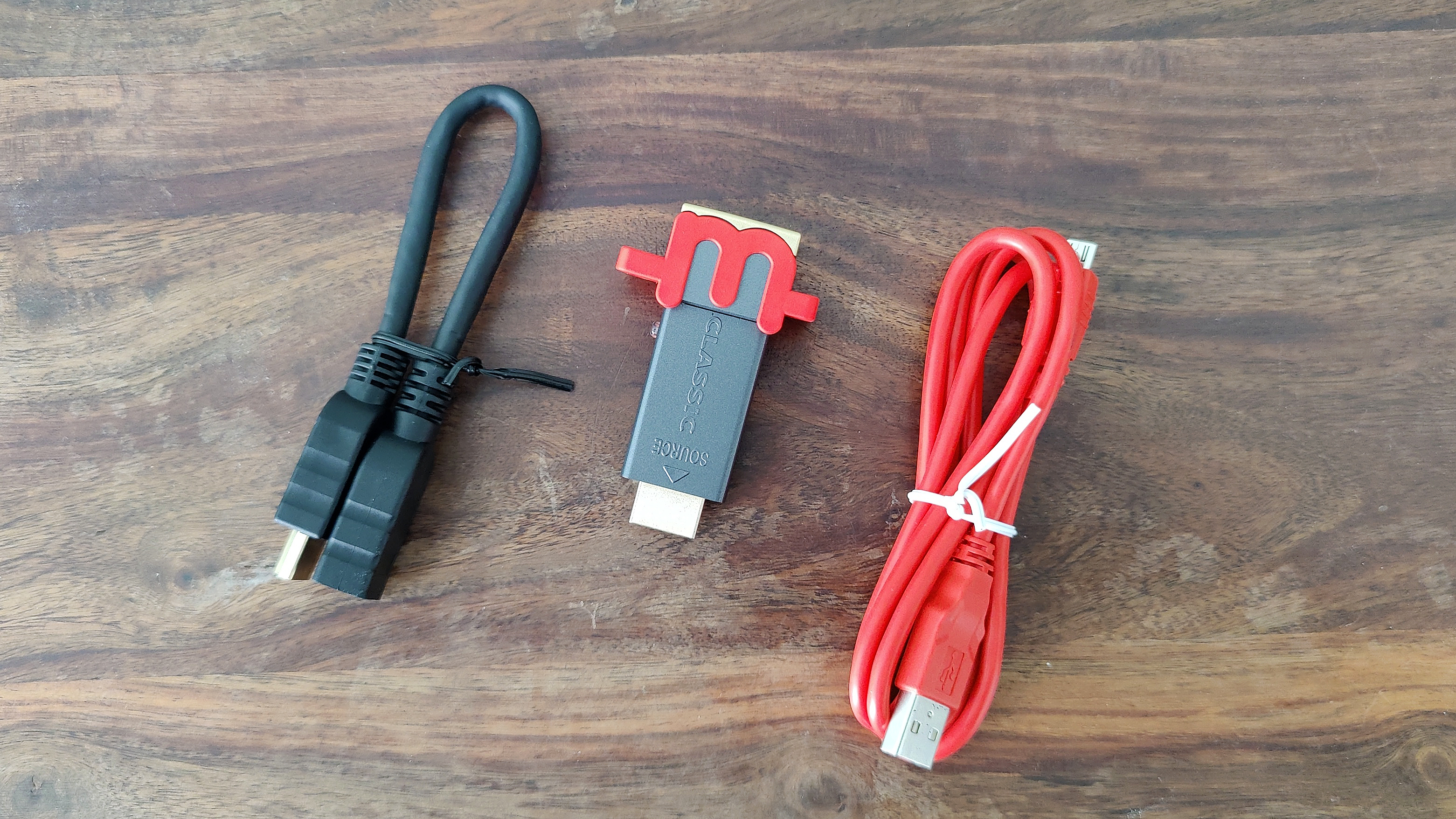
The contents of the mClassic package.
Open the mClassic box and you a greeted with the mClassic itself, which resembles a fat USB stick, as well as a power cable and HDMI extender cable.
The mClassic itself is powered by that Micro-USB to USB 5V cable, so that means the console itself you are using can power it, or the connected TV or monitor.
The HDMI cable extender is useful as it allows you to offset the mClassic itself from the console in case there isn't enough clearance (see below pic).
The Marseille mClassic is out now and costs $99. Shipping is free. The mClassic can be bought directly from the Marseille store.
Get all the latest news, reviews, deals and buying guides on gorgeous tech, home and active products from the T3 experts
Marseille mClassic review: setup
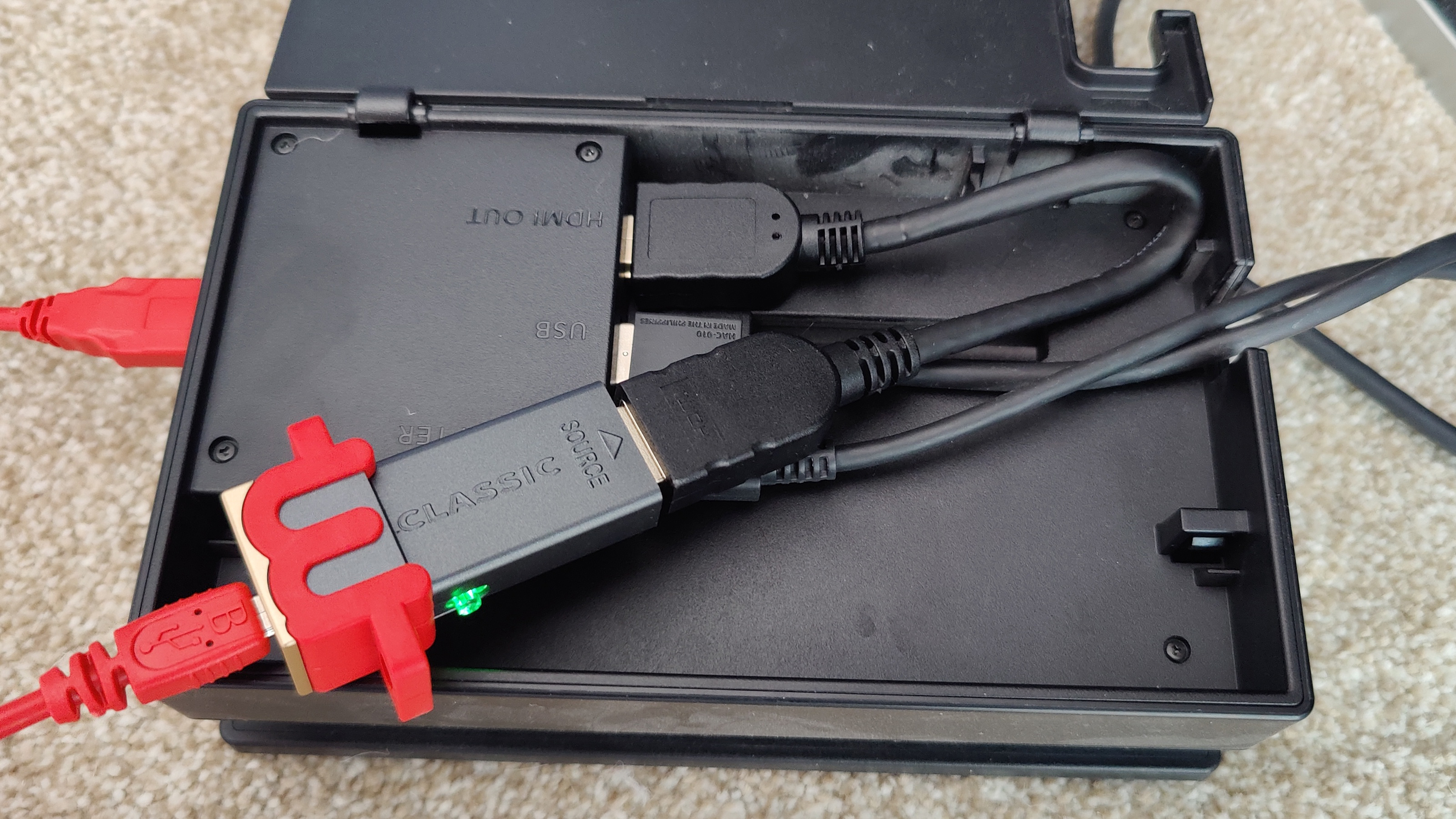
Setup took less than 5 minutes.
Setting up the Marseille mClassic is incredibly simple. When I used it with the Nintendo Switch I simply unplugged the HDMI cable out of the back of the Switch's dock, then connected the HDMI extender cable in its place, then connected the mClassic to that, and then plugged in the original HDMI cable (the one that goes to the TV) into the back of the mClassic.
The only thing then left to do was plug in the mClassic's power cable to it and then to one of the hub's USB ports. Job done (see pic above).
It is then simply a matter of turning on the console and the TV. I have to say I was very impressed with how easy Marseille had made installing the mClassic, with me up and running within 5 minutes from unboxing. No advanced expertise was required at all — this is a proper plug and play piece of technology that even a child could install.
Marseille mClassic review: performance
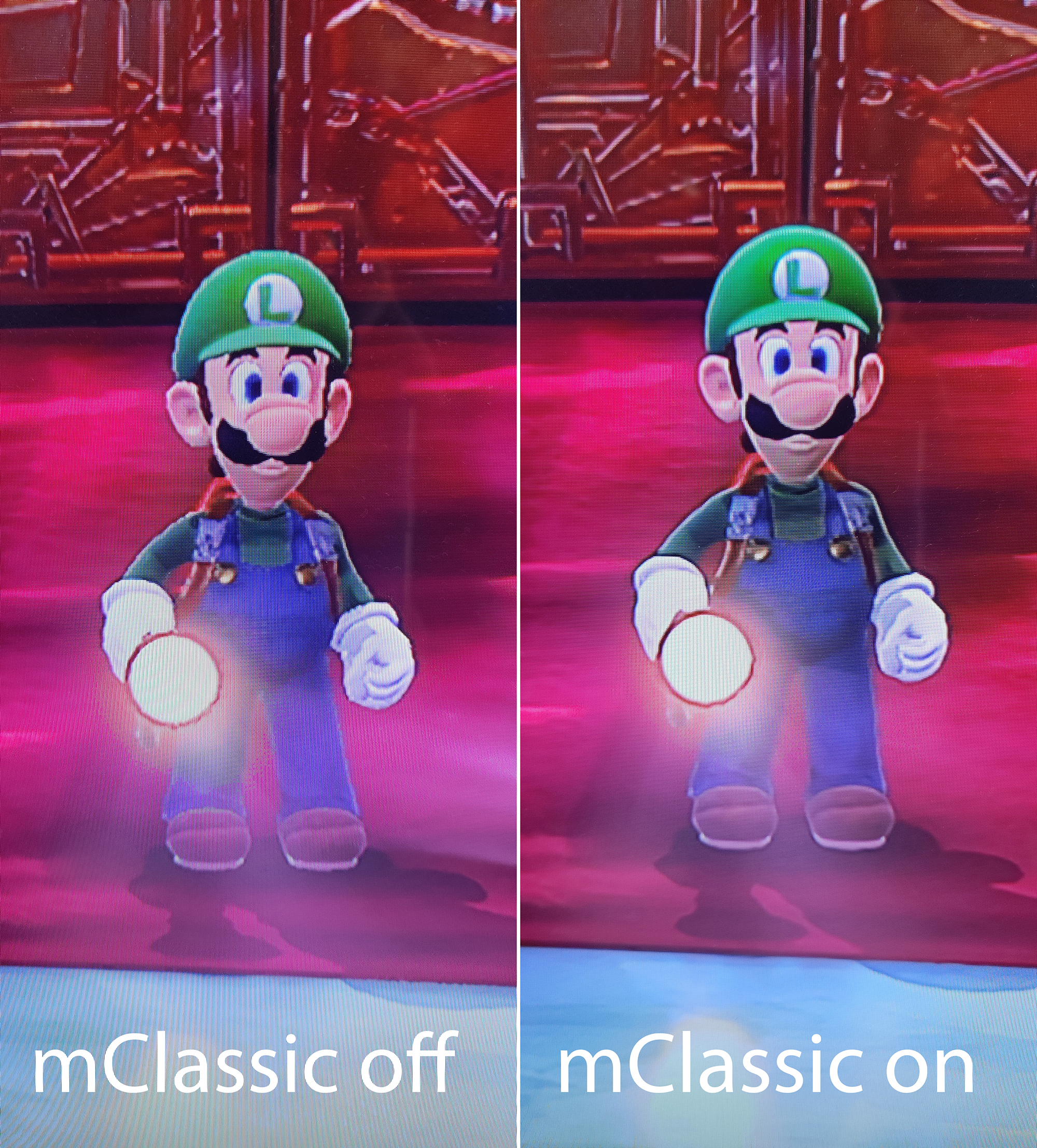
The difference with the mClassic turned on was marked. Just look at how smooth and well-defined Luigi is on the right.
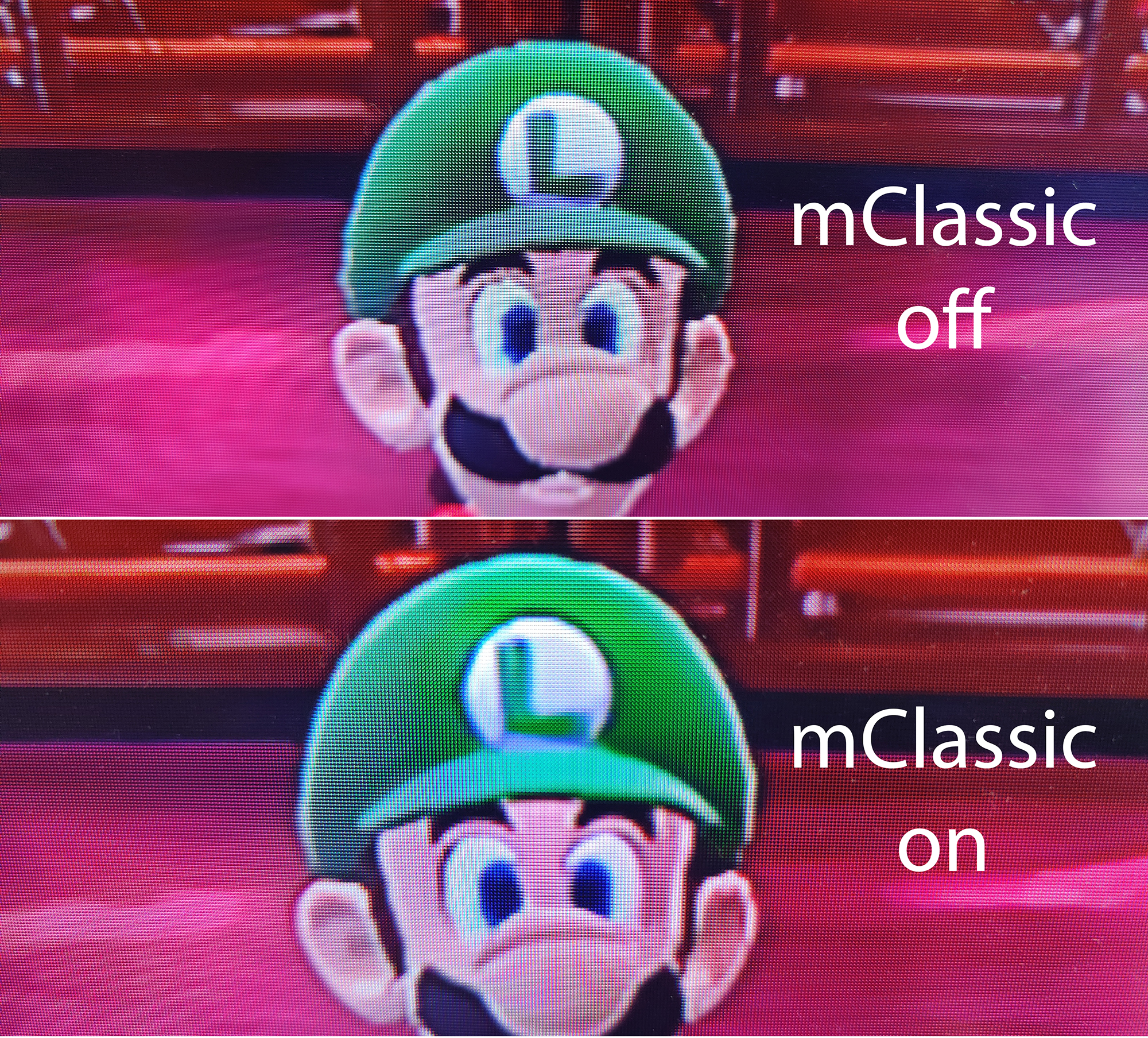
The close-up view shows the difference even better.
The first game I tested the mClassic with was Luigi's Mansion 3 and, immediately, I was blown away with difference it made. With the mClassic off Luigi and his surrounding spooky environment displayed, on my 4K TV, with jagged edges and a fuzziness in pieces of complex geometry.
Flick the switch on the mClassic, though, (the mClassic has a side-mounted switch that lets you run it without any processing, with processing turned on, as well as a retro-game focused mode) and suddenly those jagged edges disappeared. It was like the resolution of the game had just been jacked right up, as well as anti-aliasing turned on.
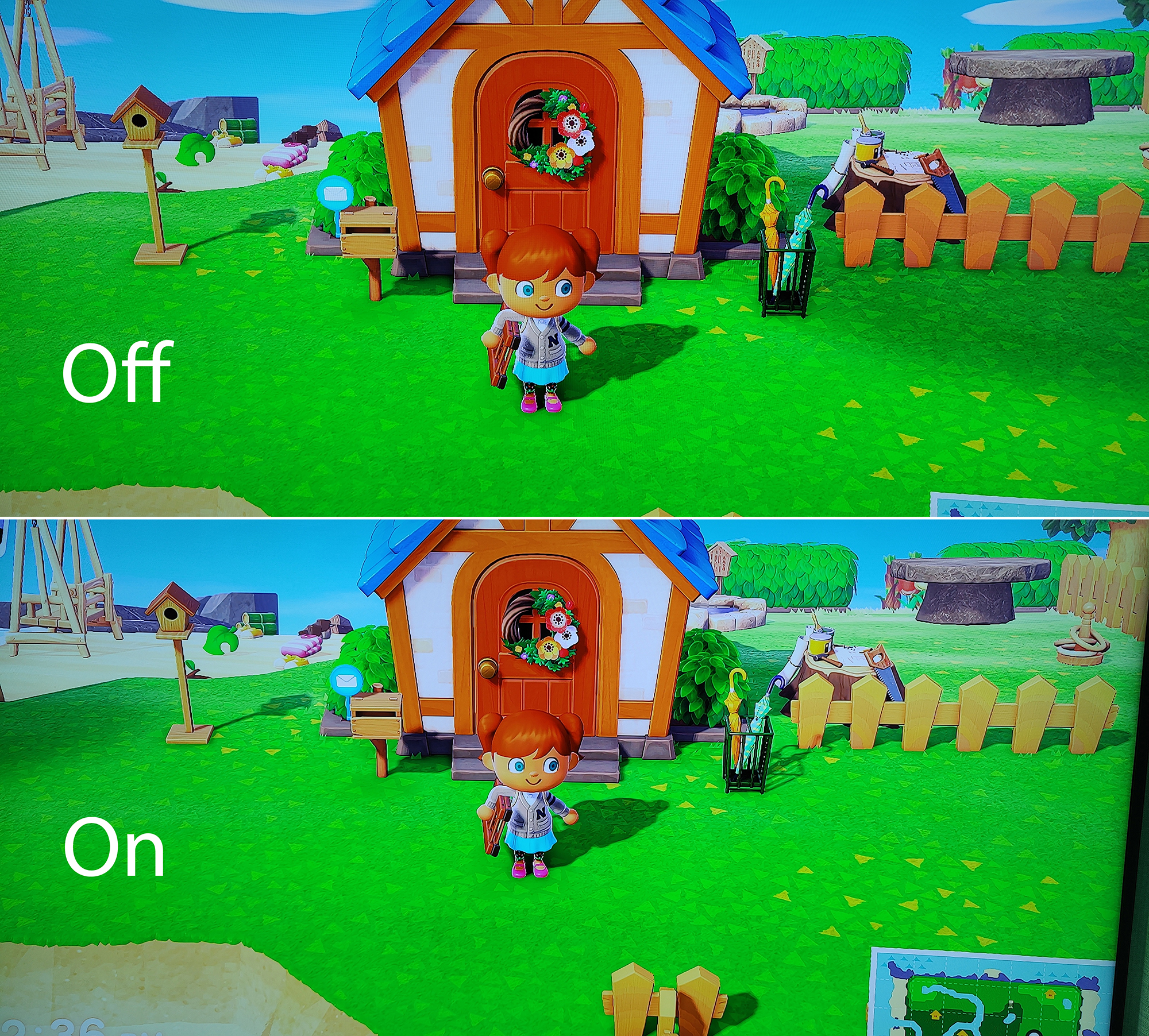
Animal Crossing looked better than ever with the mClassic hooked up.
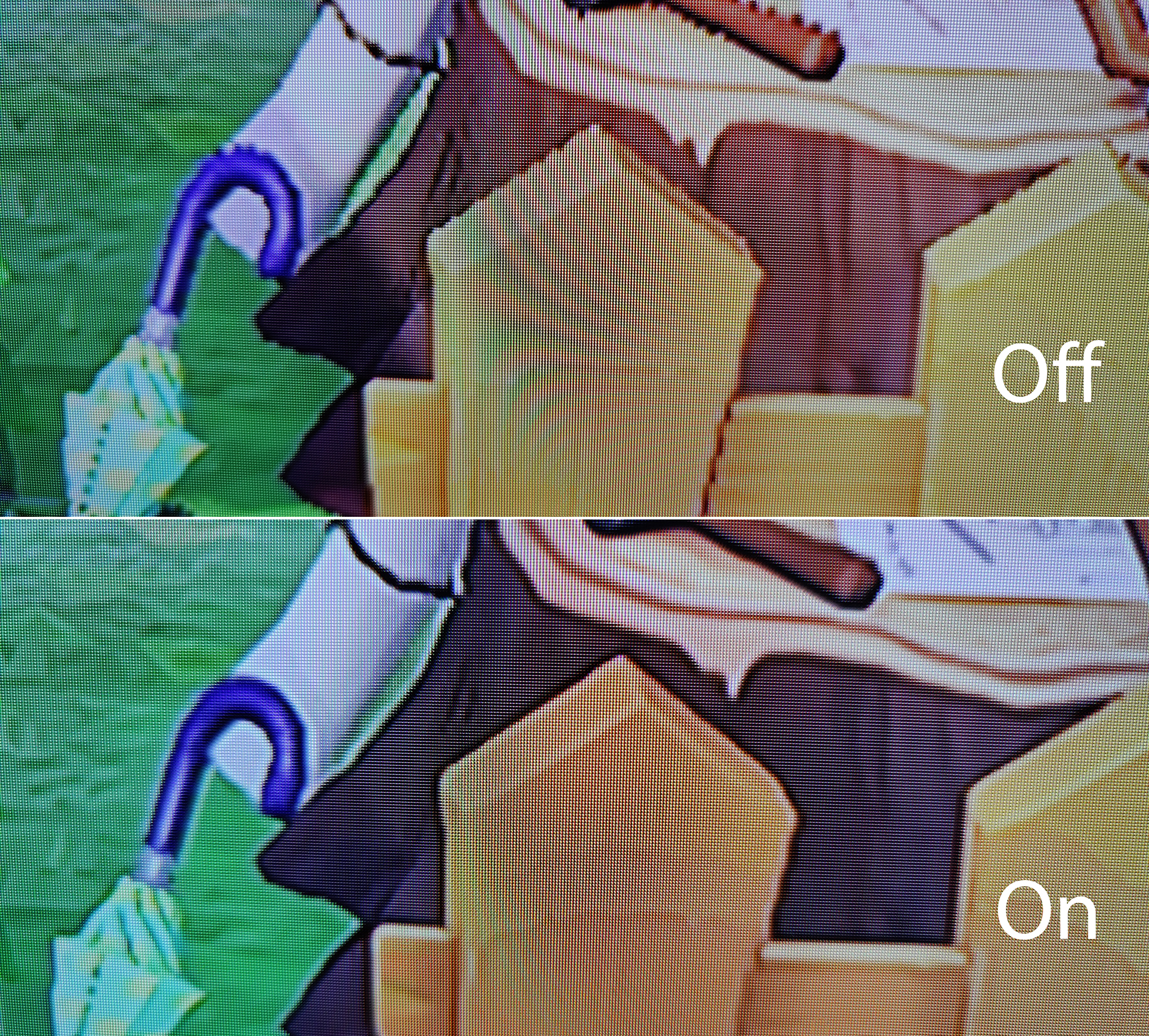
Just look at the fences. Super noisy and jagged edges with the mClassic off, and smooth and well defined with it on.

Again, look at the edge noise on the barrel and character's hair. The mClassic removes this.
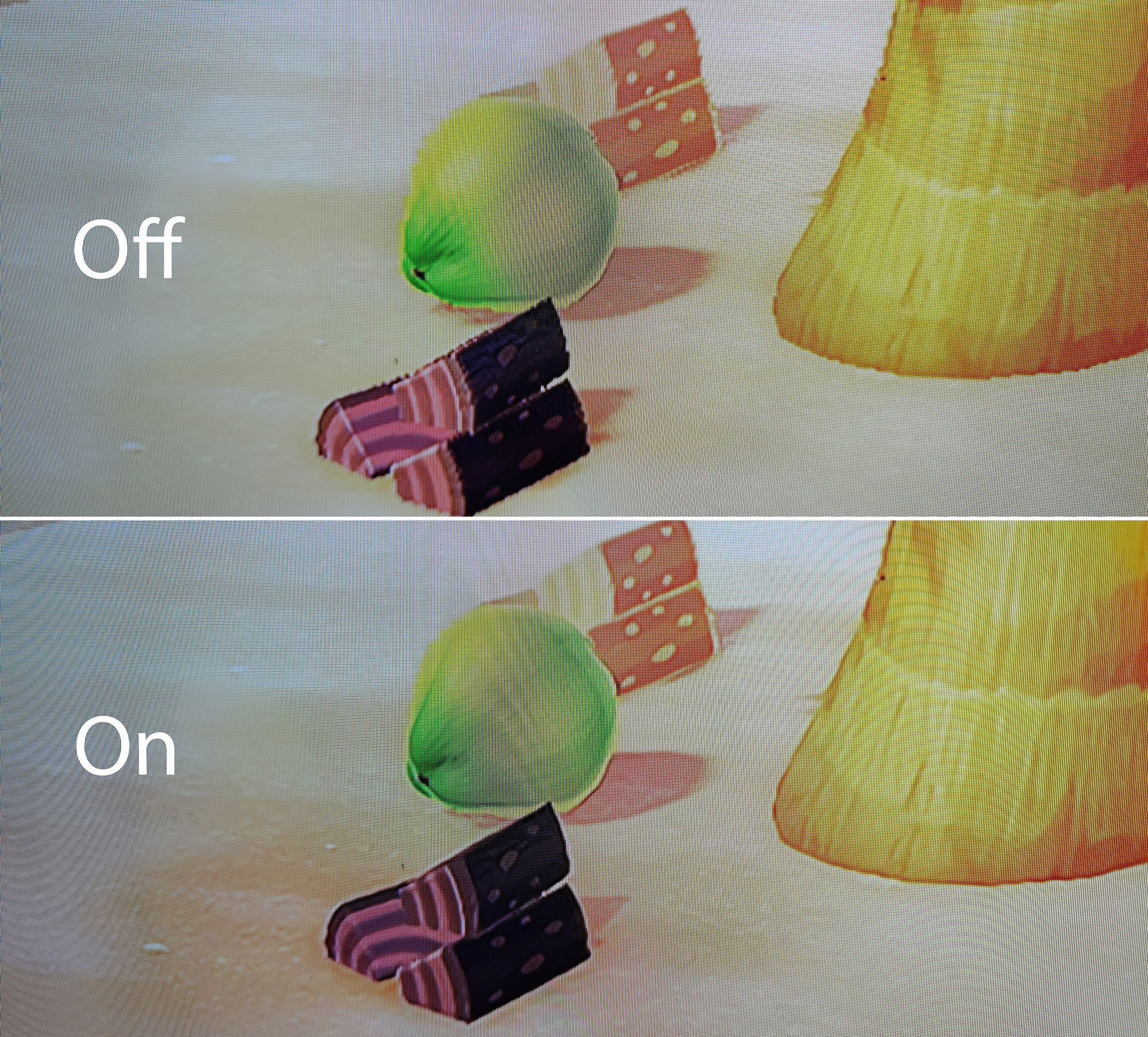
Looks at how crisp the wood and coconut looks with the mClassic turned on compared to it being off.
The next title I used to test out the mClassic was the awesome Animal Crossing: New Horizons and, if anything, the results were even more marked to the eye. Where before the colourful cartoon island, characters and objects moved with notable jaggies (especially marked in the background of scenes), with the mClassic turned on everything just looked and felt smooth.
In the images you can see above, this is very notable both at a wide view and up close. In the top image especially, which is very busy with workbench, umbrella, fence and parchment all in close proximity, the lack of clarity without the mClassic on is especially notable.
It is this definition improvement that I was most impressed with when using the mClassic, and especially so with background objects, which helped improve immersion. And, speaking of the mClassic's ability to make a world more visually arresting, just take a look at how it injects Pokemon Sword with far enhanced background object definition.
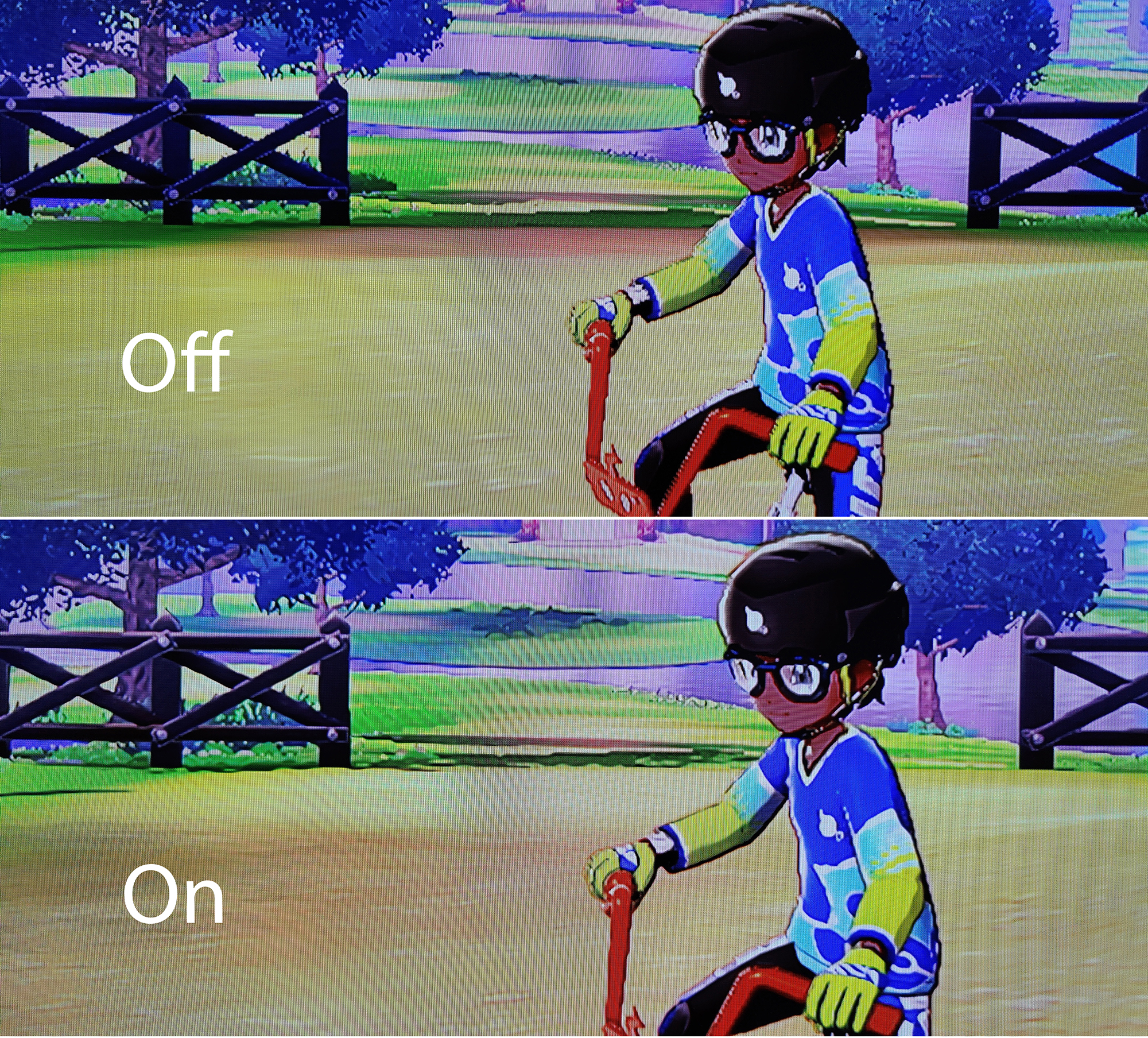
Up close the improvements are marked, but the further back in the scene your eye goes the even better they become.
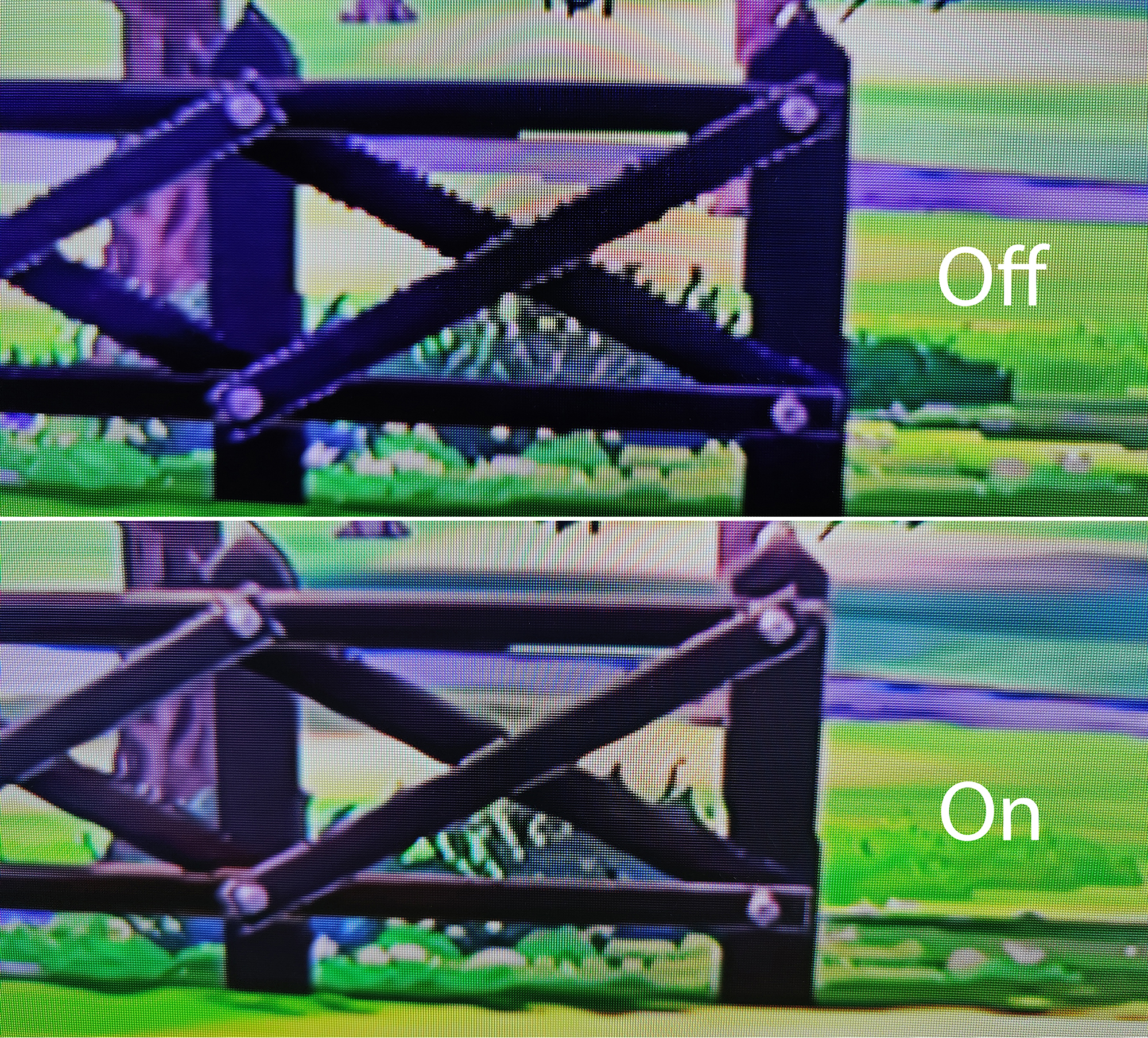
Just look at how messy and poorly defined the fence is with the mClassic off compared to with it on.
Marseille mClassic review: verdict
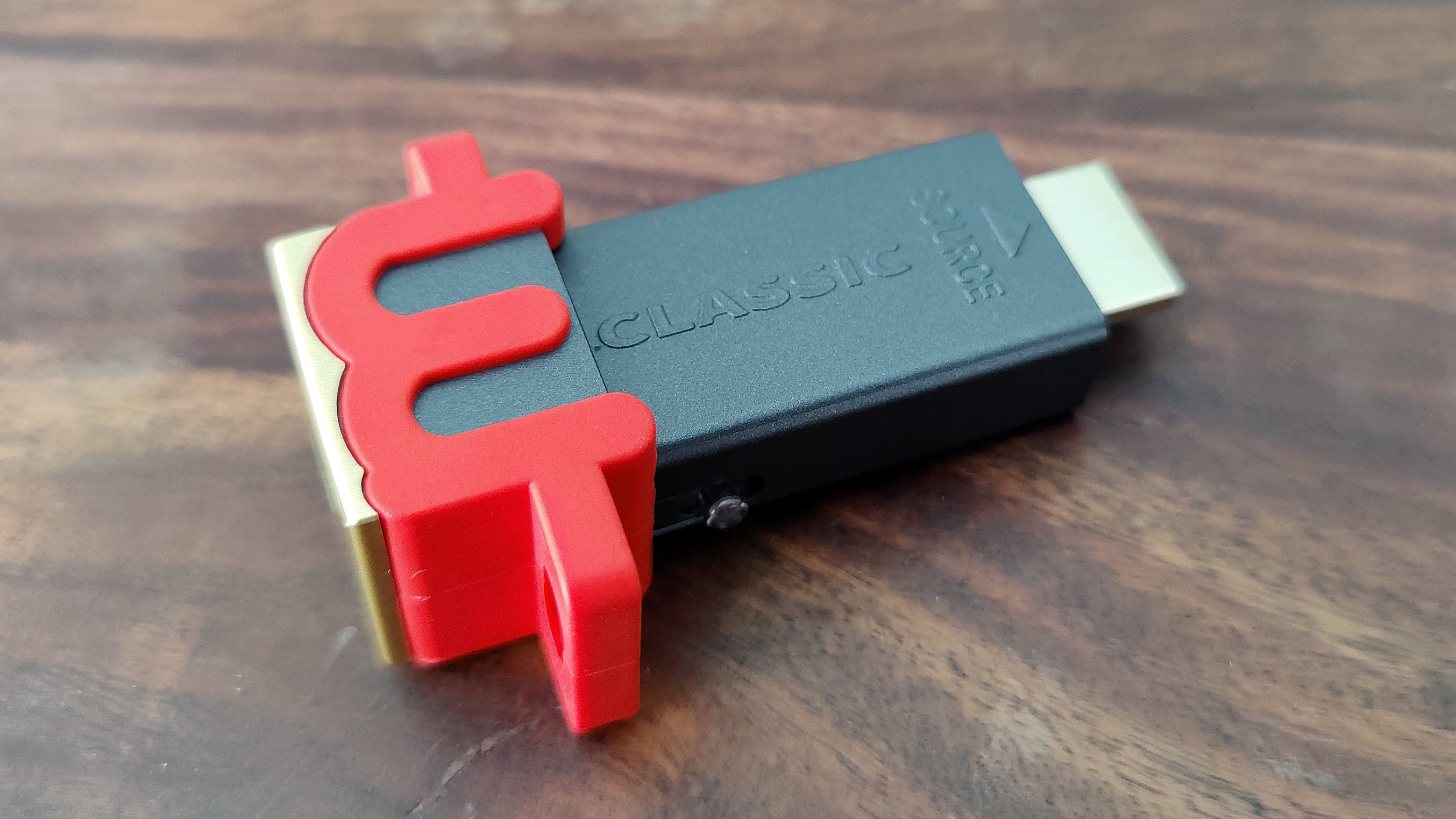
The mClassic is a quality piece of kit and, for me, a must-have accessory for Nintendo Switch owners.
My experience testing the mClassic with the Nintendo Switch was really enjoyable and I saw marked gameplay-enhancing visual improvements in every title I played.
As someone who has his Nintendo Switch connected to a large 4K TV, its lack of power compared to, say, the PS4 Pro and Xbox Series X is often marked, with the console's inability to run games at a high resolution or with many post-processing effects on hurting the visual experience.
Indeed, in many games I often prefer to play on the actual Switch's screen itself, as while that is not anywhere near as big, as it condenses everything down it does make images on the Switch look sharper.
And, simply put, the Marseille mClassic fixed this issue for me, upscaling the images from the Switch, adding various beneficial graphical effects to them, and then pumping them to my 4K TV.
The result was that it was suddenly as if I had installed a new, more powerful graphics card in my Nintendo Switch. It was the Switch experience that many gamers have been crying out for for a few years now, a more powerful Switch that could display Nintendo's awesome selection of games in their best possible light.
And, then when you consider that the mClassic can benefit pretty much any modern console (PS4 and Xbox One included) and that it has a dedicated mode for retro consoles, too, and it really becomes evident of just how much value and performance it delivers. And it does so in a compact, plug-and-play package, too.
I think for Nintendo Switch gamers especially, though (as Nintendo's console is technically the least powerful of the modern consoles) it is a really smart buy, as it can within minutes upgrade the console's graphics to a level that feels much more on point for 2020.

Rob has been writing about computing, gaming, mobile, home entertainment technology, toys (specifically Lego and board games), smart home and more for over 15 years. As the editor of PC Gamer, and former Deputy Editor for T3.com, you can find Rob's work in magazines, bookazines and online, as well as on podcasts and videos, too. Outside of his work Rob is passionate about motorbikes, skiing/snowboarding and team sports, with football and cricket his two favourites.